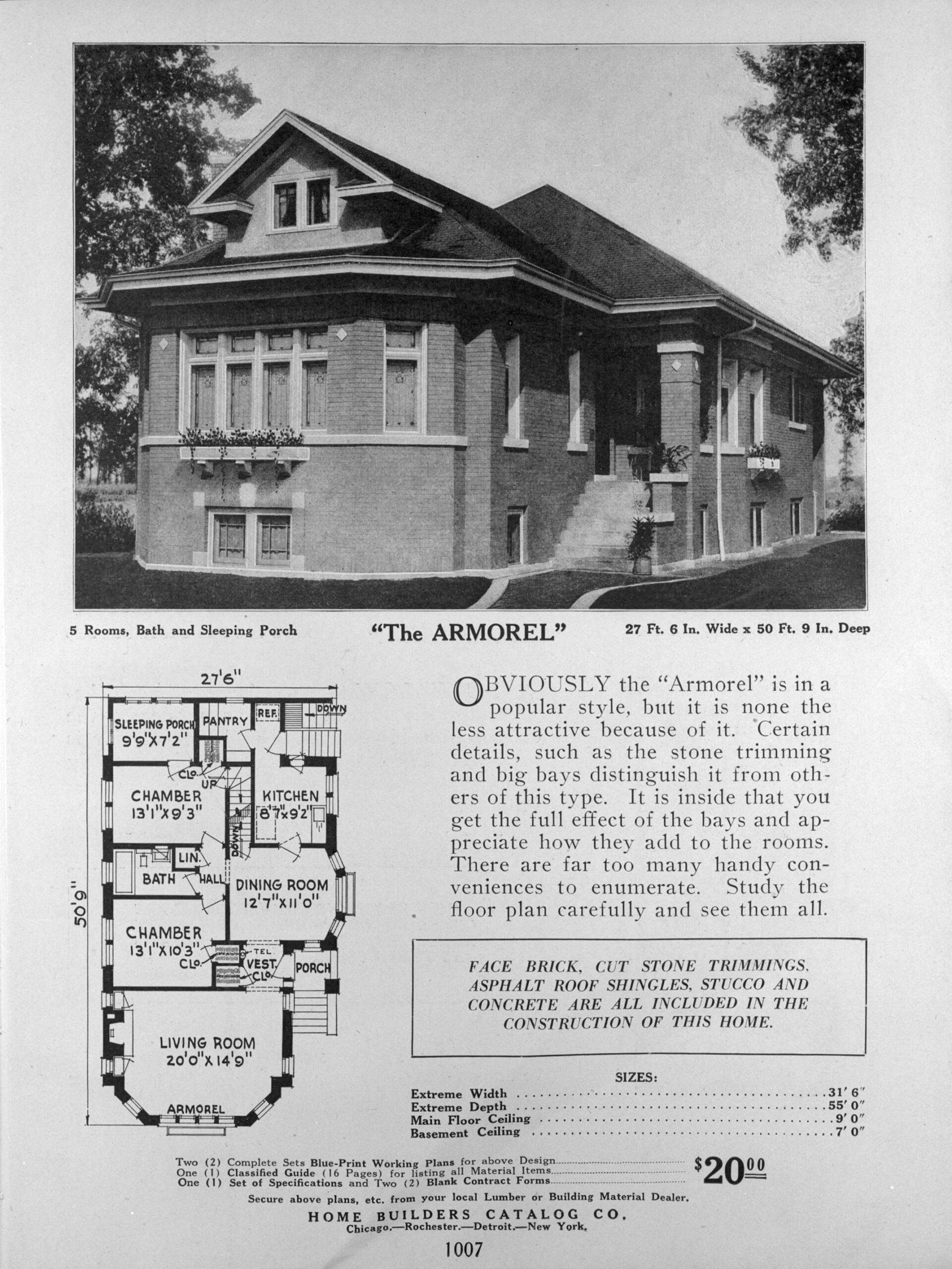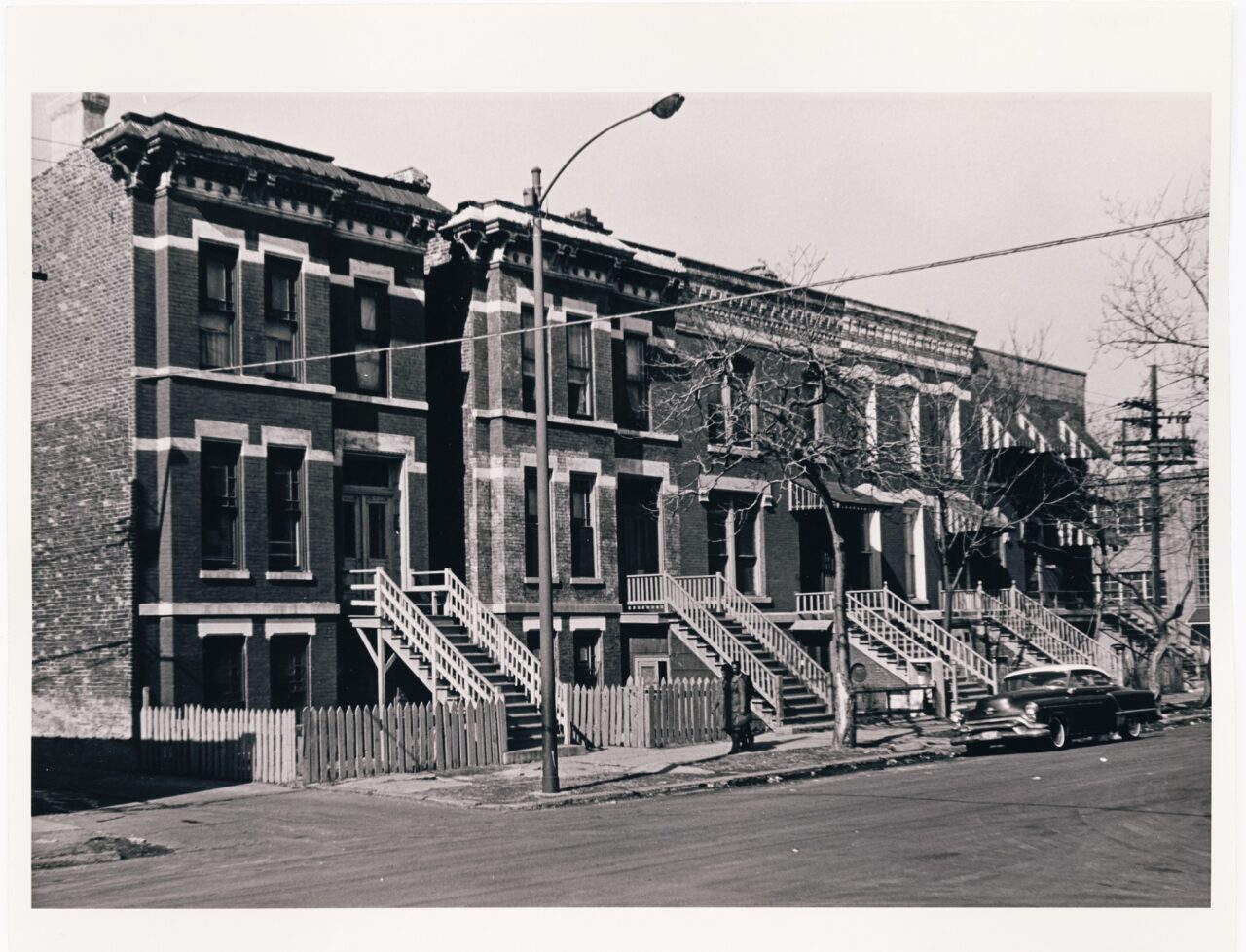
An image, floor plan, and text for The Armorel, a bungalow from the Home Builders Catalog, 1926. CHM, ICHi-015886
About one hundred years ago, Chicago saw a building boom of single-family homes of a certain style—the bungalow. The word “bungalow” derives from the British colonial experience in India, and beginning in the twentieth century, architects, builders, and developers adopted the term to describe modern houses built throughout the United States.
In Chicago, a few architects had begun to design and build expensive, Craftsman-style, California-influenced bungalows in affluent locations of the city by 1910. When the housing market boomed in the 1920s, developers throughout the metropolitan region marketed lower-priced “bungalows” to an expanding range of middle-class families. These structures all had modern plumbing, electricity, and central heating. Within the city limits, a common form of bungalow was a rectangular brick structure with a modestly pitched, hip-raftered roof and a small distinctive front porch. It fit on narrow city lots and followed the floor plan of earlier one-story working-class houses.
However, builders constructed a great variety of structures even in the city’s “bungalow belt”—houses that were built in the 1910s and 1920s in a collar just inside and around the city limits. By 1930, one-fourth of all residential structures in metropolitan Chicago were less than ten years old, many of them bungalows, ranging in cost from about $2,500 to $10,000 (about $38,000 to $155,000 in 2020).
A form of bungalow continued to be built in working-class areas of the South Side in the 1960s. However, the bungalow lost popularity among house buyers after World War II, as ranches and split-levels became the dominant house style in new areas. In the early twenty-first century, “historic” bungalows resurged as popular housing in gentrifying areas of the city. In response to that renewed interest, the municipal government started the Chicago Bungalow Association in 2000, which helps homeowners maintain, preserve, and adapt their bungalows. Learn more about bungalows in Chicago in the Encyclopedia of Chicago.
Digital Chicago
Shortly after World War II, the Chicago Tribune sponsored a contest for residential design—the Chicagoland Prize Homes Competition. Several of the competition’s twenty-four winning designs were executed in the Chicagoland area, some of which are still standing. In the Digital Chicago project Chicagoland Prize Homes, researchers plotted the homes’ locations and included images of the homes as they currently exist, showing the ways in which Americans’ ideas about housing have changed since the mid-twentieth century. View the Project
